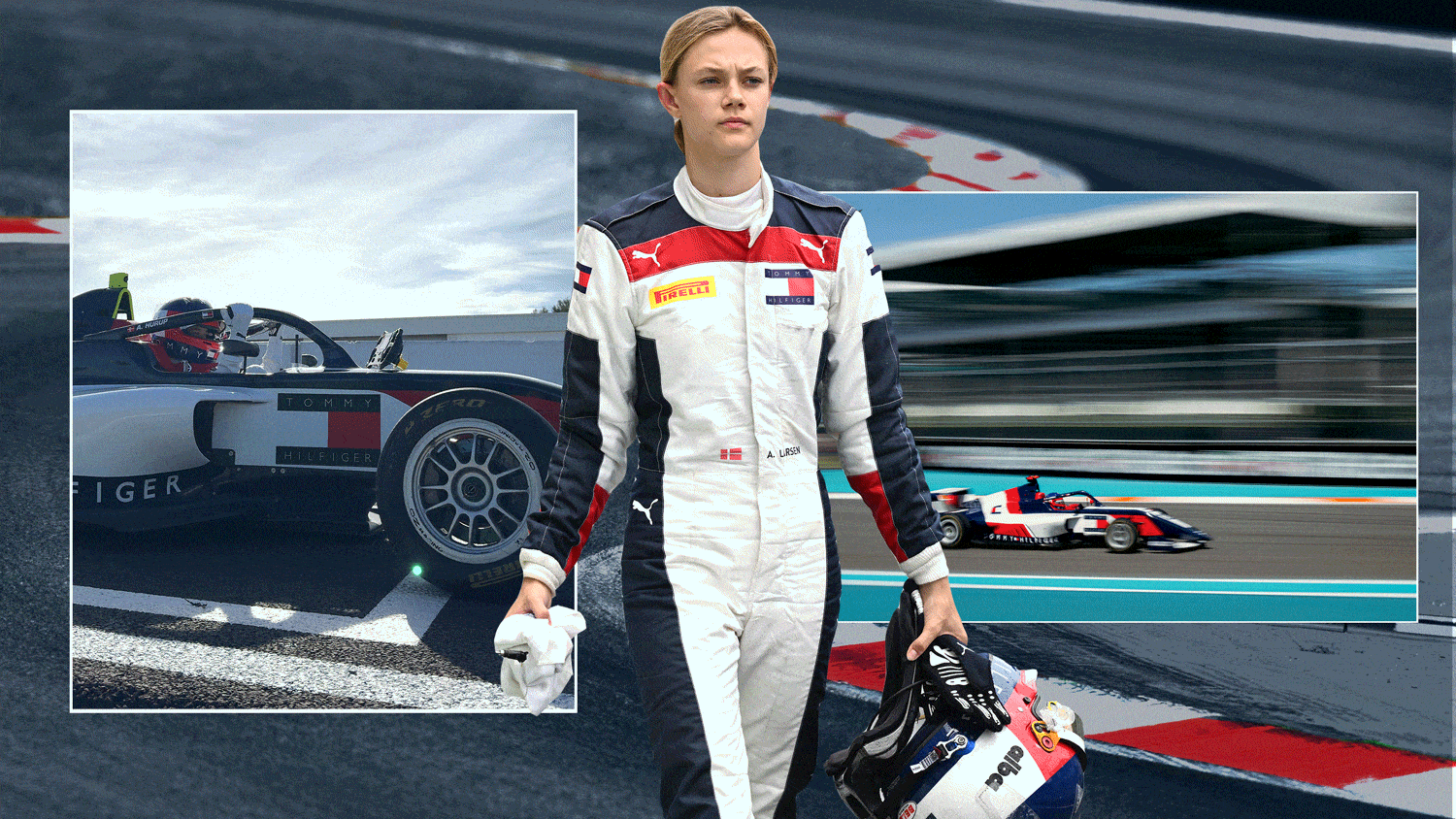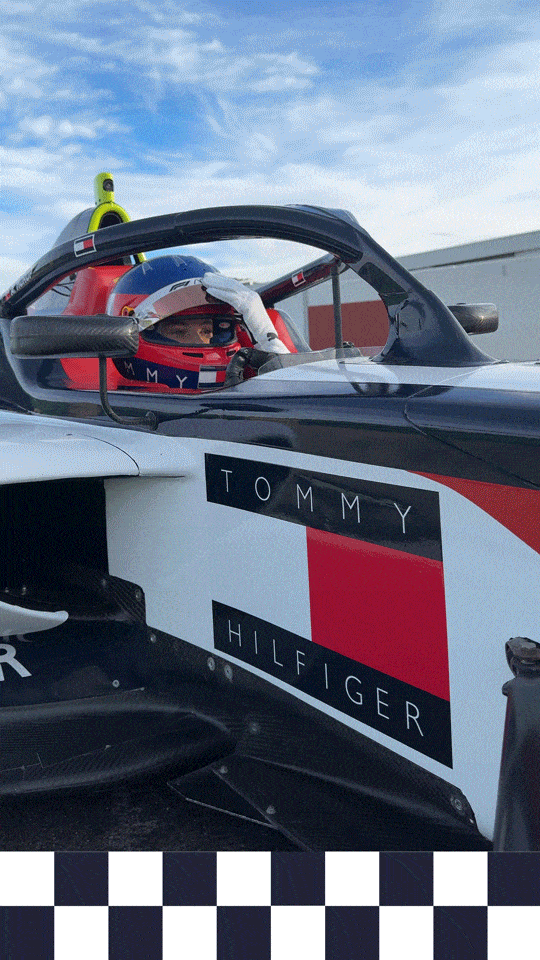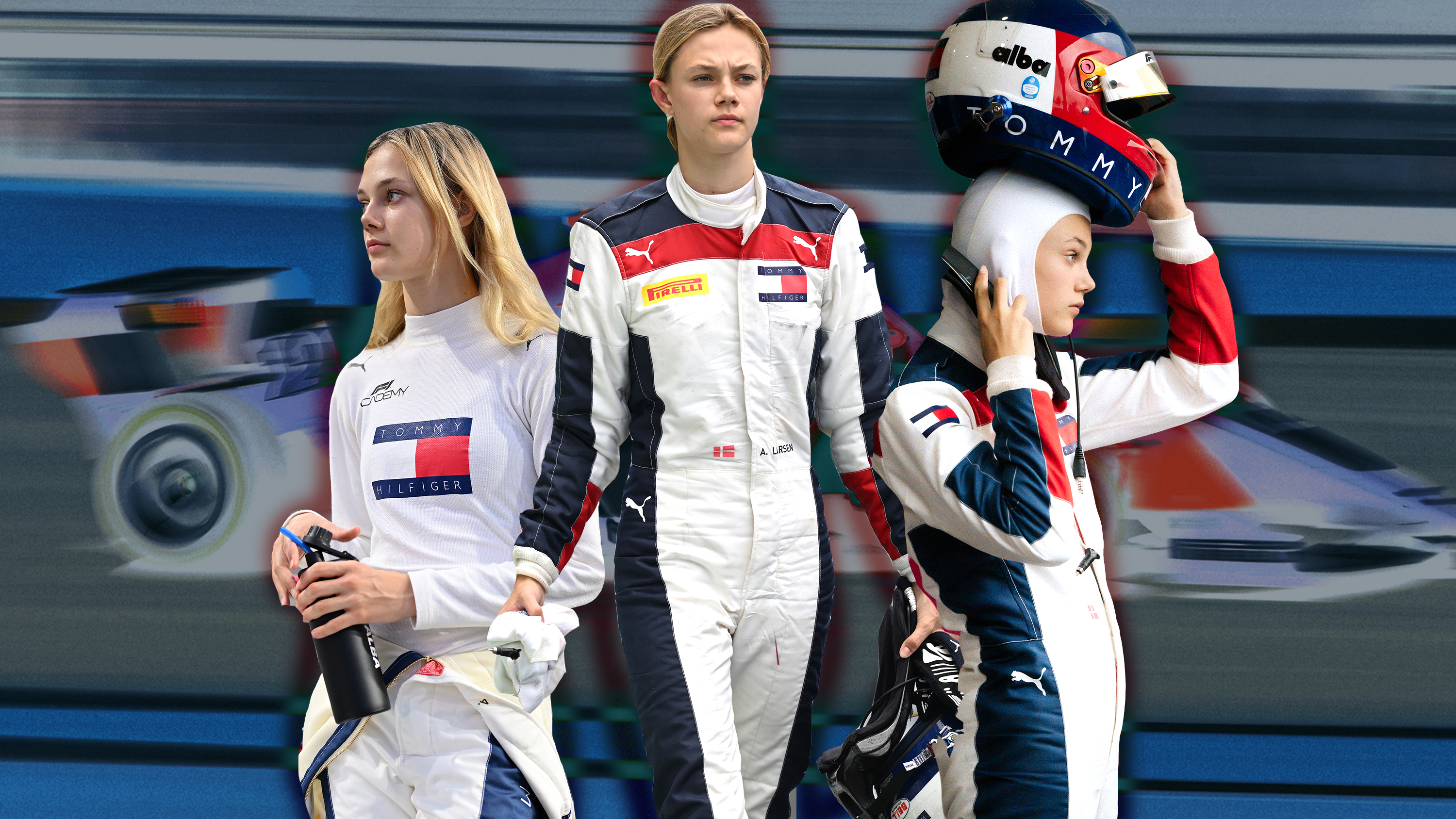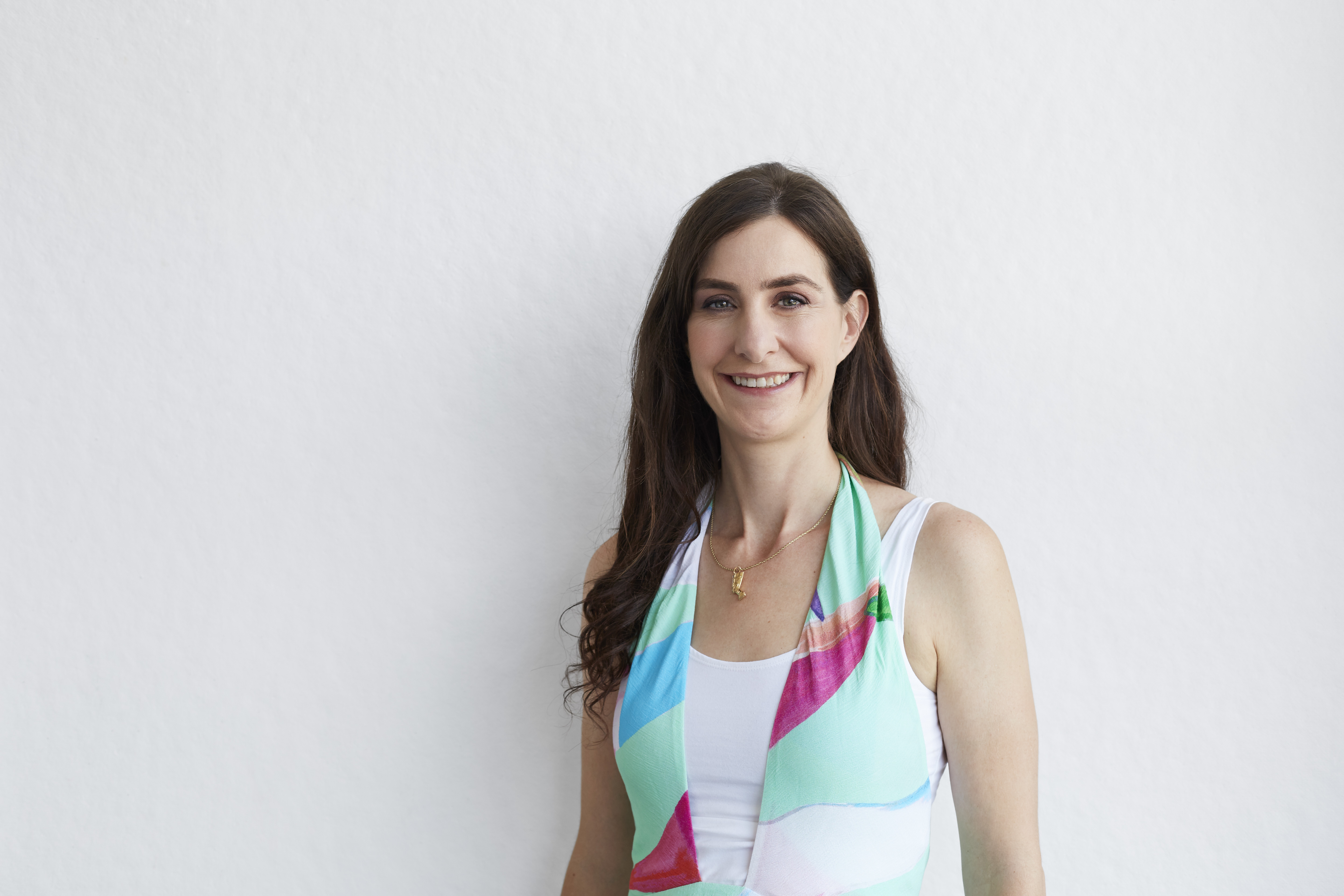Alba Hurup Larsen Is Racing to Break F1’s Glass Ceiling
Meet the teen prodigy with plans to crash the boys' club of motorsports.


The DJ pumps her arms and barrels through a high-energy set on turntables set up on the Miami Grand Prix starting line. Formula 1 races are always frenzied, but Miami dials up the glitz and glam even further.
At the center of the hubbub, F1 Academy driver Alba Hurup Larsen waves to the crowd while buckled in her driver’s seat. A red, white, and blue Tommy Hilfiger emblem is plastered across the car (her sponsor) and on the protective bar that arches over her head, the stamp of a tiny Danish flag (her home country).
When the track clears, the drivers complete a formation lap to heat up their tires. Then it’s “lights out,” as they say in the F1 world, and Hurup Larsen and 17 other women are off. Their cars zip past the Hard Rock Stadium grandstands at speeds of up to 150 miles per hour; the blur of Hurup Larsen speeding toward what she hopes is a first place finish.
At just 16, Harup Larsen is one of the youngest drivers in the pack. Her career has been one to watch ever since 2023 when she won the FIA Girls on Track—Rising Stars program, a talent pipeline for promising young women in motorsports. Later that year, she competed in the Indian F4 Championship, where she earned Rookie of the Race honors. Now, she’s racing in the all-female F1 Academy series, pushing closer to her ultimate goal: a seat in Formula 1.

The road ahead is steep: Formula 1 remains one of the most exclusive, male-dominated arenas in sports. Since its start with the 1950 British Grand Prix, only a handful of women have made it onto the circuit. The first, Maria Teresa de Filippis, raced in 1958. The last woman to compete in a Grand Prix did so 50 years ago. Just 20 drivers hold seats in the series each year, and earning one requires not only talent, but also luck, political savvy, and often millions in financial backing.
Hurup Larsen understands the stakes. Like many girls in the sport, she started with almost no roadmap—just raw talent and curiosity. Her racing journey began only four years ago, when she went go-karting near her home in Roskilde, Denmark which Hurup Larsen describes as the “city of speed.”
“I went on a go-kart track with a friend. I thought it was so much fun that I wanted to do it again,” she says. “Then we bought an old go-kart for me and my sister to share. We drove every Saturday, and then half a year later, I wanted to try and compete.”
Get exclusive access to fashion and beauty trends, hot-off-the-press celebrity news, and more.
I want to be someone young girls can look up to—someone who represents the sport and inspires.
Alba Hurup Larsen
She quickly rose to the top of Denmark’s youth karting scene, routinely beating older, more experienced boys. A family friend—Danish F1 driver Kevin Magnussen—took notice and stepped in as a mentor. When Ferrari and the FIA invited her to Maranello for the Girls on Track program, everything changed. “I had the best feeling when I got out of the car after 30 minutes, and I knew I had performed at a level I had not done before,” she says. “It was the first time I really thought I might win this.”
Her standout rookie season in the 2024 Indian F4 Championship solidified her potential, earning her an F1 Academy spot just weeks before her sixteenth birthday, an age when many kids her age aren’t even old enough to have a license. And now, she wants to help carve out a clearer path for others.
“When I started racing, there weren't any female drivers in F1 to look up to,” she says. “I want to be someone young girls can look up to—someone who represents the sport and inspires.”
That lack of visibility has real consequences, even at the earliest levels of the sport. Fran Longstaff, head of research at More Than Equal—a group working to identify and support the first female F1 driver—has seen it firsthand. “Even at the karting level, probably for every 10 boys, there’s one girl there—and that’s me being generous,” she says. “You can’t take a male and female athlete and assume the same support system will work. It won’t.”

The F1 Academy was built to change that. Launched in 2023 and led by former race car driver Susie Wolff, the all-female series is Formula 1’s boldest effort yet to bring more women into the pipeline. Open to drivers ages 16 to 25, the Academy runs across seven F1 Grand Prix weekends, with practice, qualifying, and two races at each stop. The goal: turn promising drivers like Hurup Larsen into serious contenders in higher-level racing series.
“We’re here to build a bridge,” says Wolff, who is one of the few women to have tested an F1 car in the modern era. “To create a clearer path for young women with talent, drive, and ambition.” For her, the mission goes beyond the podium. “We want the next generation of girls to see this isn’t a man’s world anymore.” And in Hurup Larsen, she sees real promise. “Her results so far have been standout for a rookie, and I look forward to seeing what more she can go on to achieve.”
So does Tommy Hilfiger. The brand signed on to sponsor Hurup Larsen when she joined F1 academy last year, in a prominent endorsement of her future. “Alba is extraordinary,” Hilfiger says. “I am so inspired by her relentless determination, fearless spirit, and raw talent. Over the years I’ve had a front-row seat as the sport has grown more inclusive, more diverse, and more culturally powerful—and Alba is part of that next chapter. She pushes us all to think bigger, push boundaries, and redefine what’s possible.”
She pushes us all to think bigger, push boundaries, and redefine what’s possible.
Tommy Hilfiger
The 2019 Netflix series Drive to Survive helped spark the cultural shift that encouraged more girls like Alba to follow racing. Suddenly, the sport wasn’t just about speed—it was about personality, rivalry, and behind-the-scenes access. The fan base exploded, especially in the U.S. and among Gen-Z women, who now make up a significant share of viewers. That show was followed by others, including F1: The Academy.
It’s a big moment for visibility, but exposure alone doesn’t close the gap. The biggest obstacle? Money. “The funding side is hard,” Hurup Larsen says. “A lot of people have to stop because they don’t have enough money. To get laps in the cars, it takes a lot more funding.”
Pippa Mann, a veteran of the Indy 500 and founder of Shift Up Now, a group that helps women drivers secure sponsorships, says the gap in resources remains stark. “It’s still inherently harder for female racers—especially outside of F1 Academy—to get backing. They’re often competing with less testing, less seat time, fewer new tires, smaller teams, and no coaching. That would be unheard of in most sports,” she says. “We’re still viewed as a risk by so many brands, despite the strong business case for backing women. And when we make mistakes, the backlash is louder, more targeted. They’re coming after our teams, our sponsors.”
Still, there are signs of real progress. Marta Garcia, the 2023 F1 Academy champion, now races for the all-female sportscar racing team Iron Dames. In June, the team competed at the historic 24 Hours of Le Mans, alongside Jamie Chadwick—the most decorated female racecar driver of all time and three-time W series champion.
“When we see talented women in good equipment, with proper funding and support, the world gets closer to being ready to accept a female F1 driver,” Mann says.

Back in the Miami paddock, I meet Hurup Larsen not long after she finishes the race. Still in her suit, she’s surrounded by cameras and crew. The day didn’t go as well as she hoped—after a slow start she finished in the back half of the pack, although she managed to claw her way forward later in the race. “That’s what I think is the most fun about racing,” she says. “It’s competing and being close and having those battles where you send it inside and you're feeling the adrenaline.”
Hurup Larsen’s parents and younger sister hover in the background. Her mother admits she finds the races terrifying: “We hardly ever breathe when she’s out there.” Her father smiles and says he thinks she “gets some energy” off the chaos.
Hurup Larsen, for her part, looks calm. “I want to compete with the best and win with the best,” she says.
The second Miami race was canceled due to rain. And so Hurup Larsen eventually flies back to Denmark to study for her math final—she still attends high school and loves science—and to prepare for her next race. That includes practice time in a simulator and rigorous physical training, like weightlifting to build neck strength so she can withstand g-forces in the car, and boxing lessons. With plans to head to F1 Academy races in Montreal and Zandvoort and the F4 British Championship this season, Hurup Larsen feels the need “to catch up because some of the girls have a lot of experience, and I’m just getting started,” she says.
Before she leaves the track, Hurup Larsen offers me her helmet for a photo opp. “I can be very social and talk to people,” she says with a smile, “but when I have my helmet on and my suit on, I’m in the zone and ready to go.”

Tamara Warren is the C.E.O. and founder of Le Car. She has written for The New York Times, Car and Driver, Elle, The Verge, and Vox.
